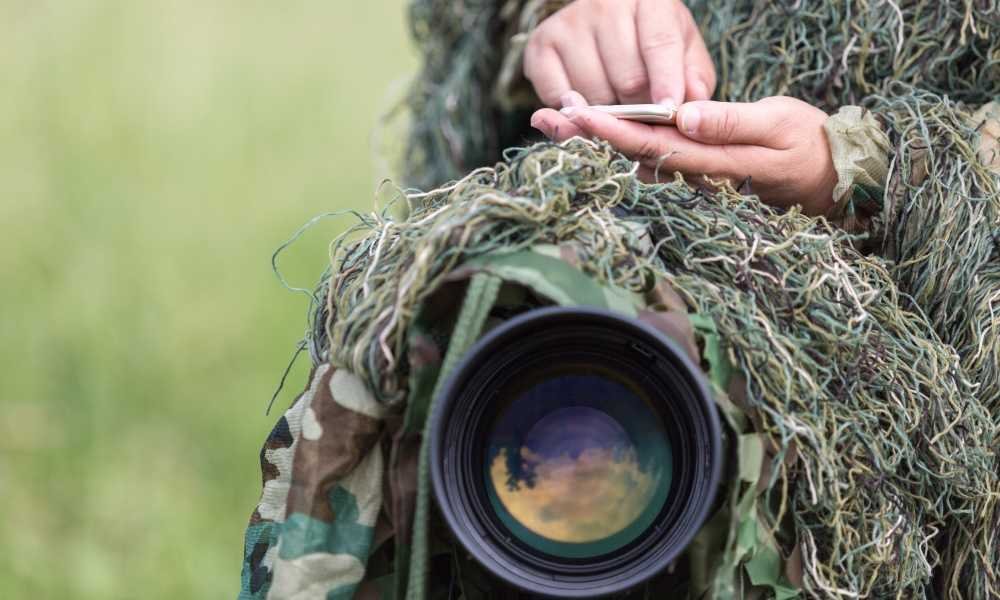
When it comes to choosing the perfect trail camera for your needs, there are plenty of questions you might ask, such as “do trail cameras have internal memory?” As you begin to sort through the variety of different features from LED low-light flash to trigger speeds, it can be difficult to determine which features are necessary and which are simply luxuries that you will never use.
If there’s one thing many people need to know about their desired trail cam, it’s if they need to buy an SD card or not. In this guide, we will discuss the pros and cons of internal memory and external memory, based on your specific trail camera needs.
Do Trail Cameras Have Internal Memory? How to Find a Camera with Built-In Memory?
When you start hunting for a camera, you’re going to need to think about all of the best places to go in an effort to find the right product for your budget and your needs. Ideally, the internet is one of the first places you should visit, as it will give you an array of different models that you might not be able to find in-store.
You’ll also have the ability to sort through customer reviews, frequently asked questions, and have the time to make a well thought out decision before making your final purchase.
If you prefer to shop in-person, big box stores, hardware stores, and hunting equipment stores all have trail cameras from popular brands. Since retailers will rely on the best selling trail camera companies, you might have better luck finding a design with a built-in memory.
The Benefits of Internal Memory in a Trail Camera
Internal memory can be quite useful in a variety of situations, especially if you’re the type of person who doesn’t want to invest a lot of time and effort into capturing images and photos around your home or hunting site. Some of the greatest advantages of a trail camera with internal memory include:
- No Need for SD Cards: By far, the largest advantage to an internal memory is the fact that you won’t have to rely on SD cards to get information off of your trail cameras. This means you don’t need to go out and buy additional components just to make the camera work the way it was designed to, plus, you don’t need to worry about losing any smaller pieces while you’re out in the woods. At the end of the day, having an internal memory is just easier.
- Don’t Have to Worry About Compatibility: Another important thing to think about when you’re wondering, do trail cameras have internal memory, is that those with an internal memory are compatible with nearly every device. All you’ll need to do is attach the camera to your laptop with a USB connector, and you’ll be able to download the images directly from one device to another. There’s no need to worry about SD card readers to make the camera compatible with your other devices.
- Access to Data in One Convenient Location: The third advantage to an internal memory is you’ll have all of your most important data in one convenient location. It can be hard enough to keep track of most things around your home and office, but when it comes to a tiny SD card, they’re easier to lose than you could imagine. It’s a little more difficult to lose a decent sized camera, which is why one with an internal memory is better for people who have the tendency to misplace things.
The Disadvantages of Internal Memory in a Trail Camera
You might be wondering, what could possibly go wrong with a trail camera that has internal memory? As with any other type of electronic device, there are always disadvantages to take into consideration.
- Limited Storage Space: The majority of manufacturers will spend their time developing a phenomenal resolution for your camera in comparison to focusing on the amount of internal memory. This means you will have far less storage space than if you were to rely on an external memory source such as an SD card. If you’re interested in capturing weeks of data, it’s best if you choose the largest amount of storage in comparison to the most convenient one.
- Inability to Transfer Images Without a USB Cable: Another concern to think about when it comes to an internal memory, is that you typically won’t be able to transfer the images without a USB cable and depending on the size of the port built into the trail camera, you might need a special cable, such as a mini USB. To avoid needing any connectors or cables, you can expect to spend far more money on a trail camera that has integrated Bluetooth or Wi-Fi to wirelessly transfer images from one device to another.
- An Unnecessary Feature to Learn: Above all else, if you’re the type of person who doesn’t have the time to learn about advanced technological features and you simply want a trail camera that will point and shoot, using internal memory is just another “useless” feature you’ll have to learn. Not only will you need to figure out how to navigate to where the photos are stored in an effort to transfer them, but you’ll also need to learn how to format the memory to erase any unnecessary data.
Conclusion
Overall, if you’re questioning, do trail cameras have internal memory, the simple answer is yes, and there are plenty of different outdoor cameras that don’t require the use of an SD card. However, it might not be the best option for your needs, depending on the type of hunter or curious homeowner you are.
Internal memory can be quite convenient for people who don’t want to deal with finicky SD cards, but at the same time, it might not allow you to capture as much as you would with an external memory source.
At the end of the day, be sure to base your decision on how you hunt and what you’ll be using the trail camera for, as this will help you to decide if an internal memory is really worth it or not.


